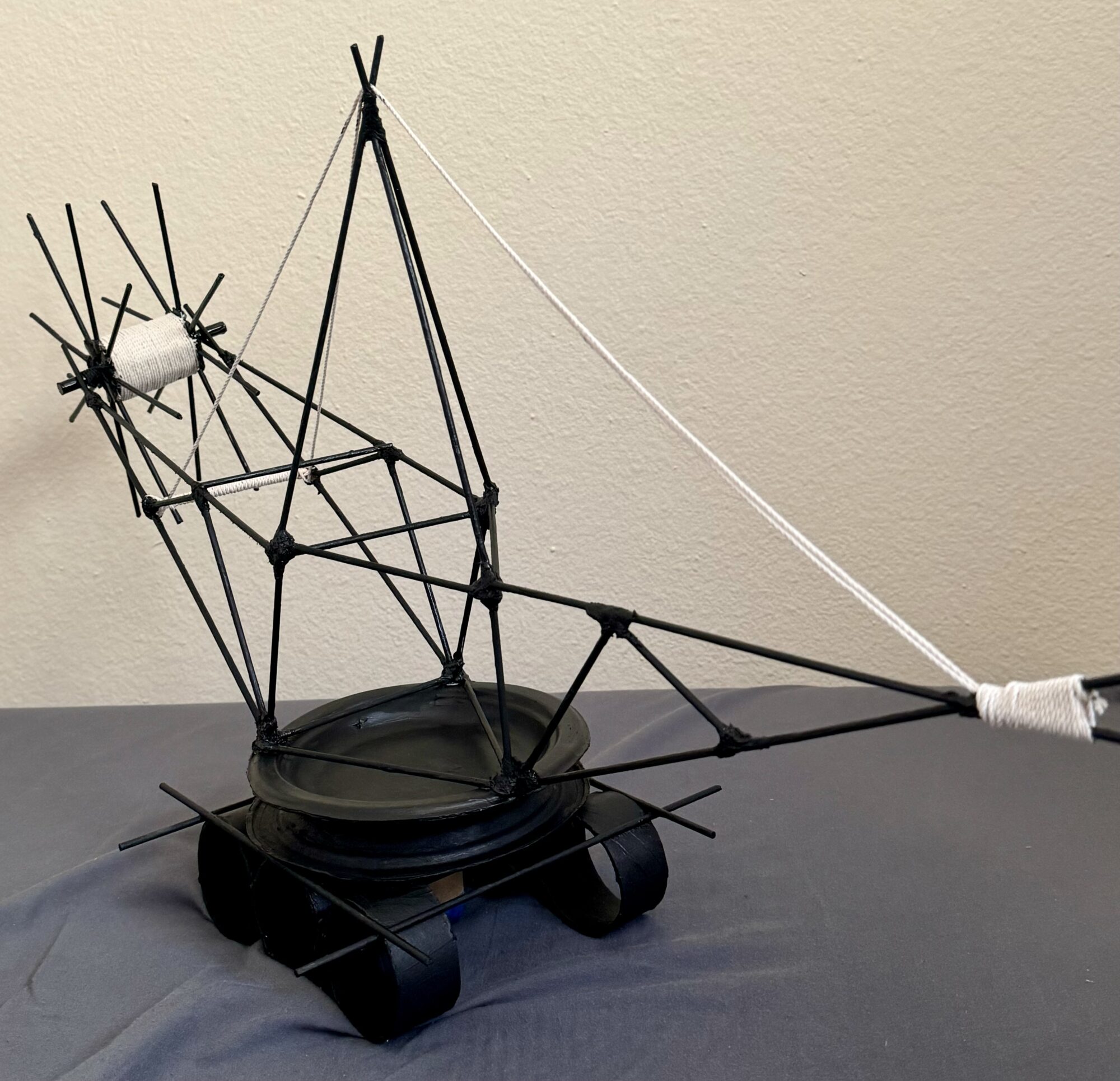A. INTRODUCTION:
Abstract Structural Art: Blending Modernism with Minimalism
The project undertaken delves into the realm of abstract structural art, marrying elements of modernism and minimalism. Two principal sources provided inspiration and direction for this endeavor.
Inspiration 1: MIT Museum Art Exhibition
The artifacts showcased at the MIT Museum Art Exhibition served as an initial muse. These pieces were distinguished by their unique structural compositions, incorporating intriguing movements akin to perpetual machines. Notably, rod-like components featured prominently in these creations.

Inspiration 2: Bagger 288
The Bagger 288, a colossal earth excavator crafted by the German company Krupp, offered further inspiration. Regarded as the world’s largest of its kind, this engineering marvel boasts a myriad of mechanical intricacies, notably employing trusses extensively in its design.

B. Timeline
The project timeline spanned from the 18th of March to the 22nd of April 2024, encompassing extensive phases from foundational research to meticulous testing. Refer to the accompanying diagram for a comprehensive breakdown.

C. FINAL MATERIAL SELECTION:
In order to make the artifact, light weight, practical, flexible for changes and depending on the availability of resources, I choose the following materials.
1.Wooden sticks
2.Rope
3.Paper Mache
4.Superglue
5.Wooden pipes
6.Matt Black Paint
7. Clay

D. INITIAL DESIGN:
My initial design involved of various trusses and moving components. The idea was to create a pseudo perpetual machine.
But as I proceeded with fabrication, some of the parts seemed infeasible at this scale. So the final artifact is the re-iterated version of this design.

E. FABRICATION PROCESS:
1. Firstly I designed a general diagram of what I want it to look like.
2. Then, I started with dividing artifact into different modules.
3. I started trimming the wooden sticks into desired length.
4. Then I made paper mache and stuck the wooden sticks inside it.
5. After making each module, I assembled all the modules together and let it dry for a day.
6. Then I painted the whole artifact Matt black.

F. IMPORTANT TAKEAWAYS:
1. Don’t work with superglue without gloves!
2. Always paint with large amount of sheet covering the surroundings.
3. Paper mache is excellent in holding sticks.
4. Always make a robust and heavy base to concentrate Center of Gravity at the base.
5. Thread artifact after painting.
G. FINAL ARTIFACT:
The final artifact I an abstract structural art on Bagger 288 with a touch of minimalism and modernism. It has 2 moving components, that allows it to rotate sideways and also a moving wheel at other end.


 H. CONCLUSION:
H. CONCLUSION:
It was a very exciting journey to make this artifact into reality, and plan to move more moving components in the future.
I. REFERENCES:
1. https://www.sibo.eu/en/biggest-mining-machines-in-the-world-bagger-288/
2. https://www.mayinstitute.org/news/inside-may/students-enjoy-a-hands-on-science-class-at-the-mit-museum-/


2 Comments. Leave new
Cool post Aryan! I think the combination of aesthetic and object to be built is really interesting. I find the scale of the Bagger to be intimidating in some ways, so I think that is also a good choice of design. One question I had was what are some alternate aesthetics you considered?
This project came out really cool, I think you did a good job combining the aesthetic of the excavator with the MIT art installation. Using the matte black paint also was a great call and made the whole thing look very professional and cohesive. This thing looks awesome! What are your dynamic elements, does the spool spin? Also would it have been possible to connect the string at the front to the spool on the back?